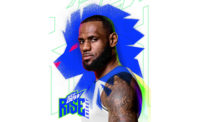Energy, Sports Drinks Reach $25 Billion
Millennials, women, and parents are trading sodas for energy and sports drinks

Over the past five years, the US retail market for energy and sports drinks expanded in vigorous fashion culminating in sales of $25 billion in 2016 after rising at an annual rate of 7% over the preceding half decade, according to market research firm Packaged Facts in the brand new report, Energy & Sports Drinks: US Market Trends & Opportunities. Looking ahead, Packaged Facts forecasts that energy and sports drinks will remain among the fastest growing sectors of the beverage market.
Between 2011-2016, notable year-over-year gains were the result of consumers seeking beverages with functional properties along with novel and healthier-seeming alternatives to carbonated soft drinks. The promise of a convenient, on-the-go caffeinated beverage also drew coffee and tea drinkers to energy drinks.
“Many consumers perceive sports drinks as healthier than sodas and other carbonated beverages due to their association with sports and physical activity in general. Although originally designed for athletes, these products soon garnered mainstream sales as anytime drinks, particularly among teen and young adult males. The novel flavor profile of energy and sports drinks also appealed to consumers seeking a change from sodas,” says David Sprinkle, research director, Packaged Facts.
Energy and sports drink producers also benefited from above-average population growth among important 25-to-34-year-olds, who are significantly more likely to consume these drinks. While the general US population grew at a rate of 0.7% annually between 2012 and 2016, the number of people in this Millennial cohort increased 1.4% annually.
Though Millennial men are arguably the face of sports and energy drinks, these products are gaining traction with other consumers as well. While women in general are less likely to consume sports drinks, Millennial women are an exception to this rule and consume sports drinks at levels that exceed their male counterparts. Similarly, women aged 50 and older also exceed their male peers in consumption of energy drinks.
Consumers with one or more children in their household are also significantly more likely to purchase energy and sports drinks for themselves. Having a single child in the home is sufficient to see this bump in reported usage, and energy drink usage tends to increase with each additional child—a clear indication that parents are a ripe demographic for marketers in this beverage segment. The age of children in the household influences usage rates for energy drinks but not for sports drinks. In fact, energy drink users are significantly more likely to have young children in their household. These findings suggest that many initially seek out energy drinks as a tool to keep up with the demands of caring for young children. In contrast, parents may be introduced to sports drinks when purchasing them for their children, perhaps as a refreshment for sports practices and games.
Looking for a reprint of this article?
From high-res PDFs to custom plaques, order your copy today!









